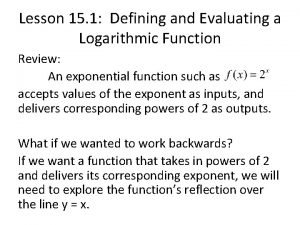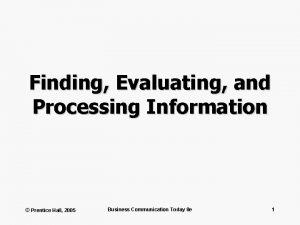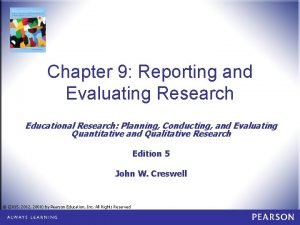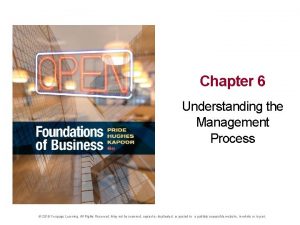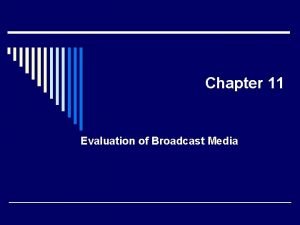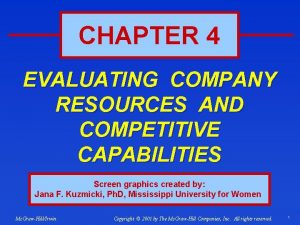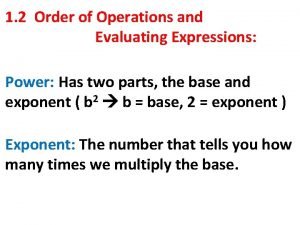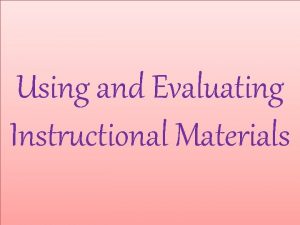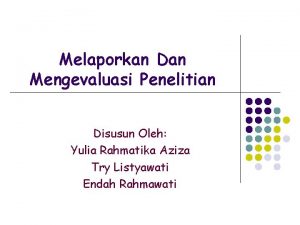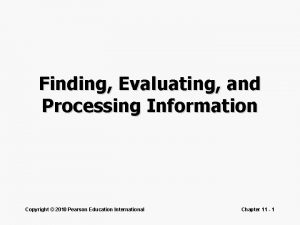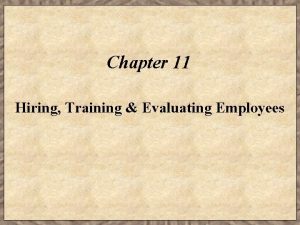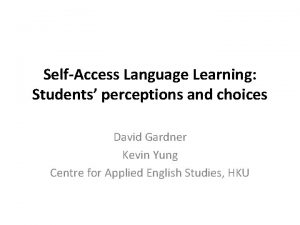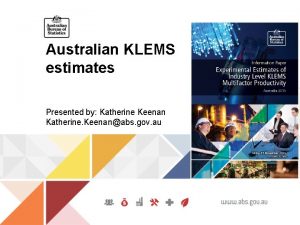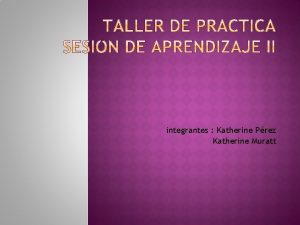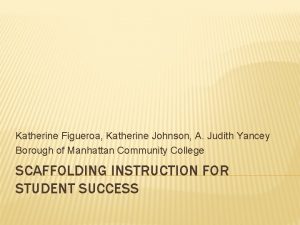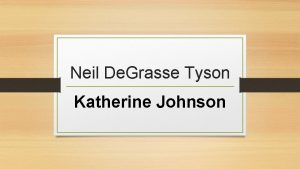EVALUATING A SELFACCESS CENTRE OPTIONS AND CHALLENGES Katherine



















- Slides: 19

EVALUATING A SELFACCESS CENTRE OPTIONS AND CHALLENGES Katherine Thornton, Otemon Gakuin University JASAL Forum 2014 (JALT)

OUTLINE Why evaluate? What to evaluate? How to evaluate? Challenges in evaluating SACs An example: English Café at Otemon

WHY EVALUATE A SELF-ACCESS CENTRE? To check whether the centre is meeting learner needs Identify areas for improvement Provide feedback for staff (job satisfaction) To check whether the centre is meeting institutional goals To account for existing funding To secure further funding Promote understanding and support for SALL among stakeholders

WHAT TO EVALUATE? Efficiency & Effectiveness (Gardner & Miller, 1997) Efficiency Quality of management – decision-making process & systems Value for money – staffing Value for money – equipment & resources

WHAT TO EVALUATE? Effectiveness (Learner gain (Morrison, 2005)) Whether the SAC is facilitating language learning Whether the SAC is developing learner autonomy

NARROWING THE EVALUATION FOCUS Learner autonomy? Value for money? Linguistic gain? Stakeholder requests Usage patterns? “bums on seats”? Mission Statement

HOW TO EVALUATE? Quantitative Numbers: Head counts, usage data, borrowing records Surveys Proficiency test results Qualitative Observations (usage patterns, interactions) Interviews (learner perceptions of gain, opinions of SAC) Focus groups (users, teachers, management staff) Document analysis (SAC reports, learning journals)

CHALLENGES FOR EVALUATION Course Evaluation SAC Evaluation Focus on linguistic gains Focus on learner autonomy Finite (homogenous? ) group of learners Fluid-user base, many non-regulars Students easily accessible Difficult to access users Control group often possible No control group Controlled learning task Multiplicity of learning opportunities Teacher-directed task Imposition on learners’ autonomy Some control over variables Little control over variables

PRESENTING RESULTS OF EVALUATION Share with Management Staff Users Ways to share Report Presentation Newsletter Noticeboards

AN EXAMPLE: ENGLISH CAFÉ AT OTEMON • Otemon Gakuin University • Opened April 2013 • Around 40 – 70 users per day • Voluntary usage policy • No integration with curriculum

FOCUS OF EVALUATION For university management: Usage patterns and statistics Mission statement aims: Student perceptions of impact on Attitudes to English/International Exchange English proficiency Learner autonomy

USAGE RECORDS User head count per koma Space usage per koma Language use Purpos e

DESCRIPTION OR EVALUATION?

MEASURING E-CO’S IMPACT Mission Statement Foster positive attitudes towards the learning of English Develop students’ English language proficiency Foster language learner autonomy and life-long self-directed learning skills Generate interest in study abroad and cultural exchange programmes Nurture intercultural awareness and a sense of global citizenship Instrument

MEASURING E-CO’S IMPACT Mission Statement Instrument Foster positive attitudes towards the learning of English Surveys, interviews Develop students’ English language proficiency Observations, self-reports (survey), Users’ TOEIC scores/class grades over time. Foster language learner autonomy and life-long selfdirected learning skills Advising session discourse analysis (over time). Generate interest in study abroad and cultural exchange programmes Survey, interviews. Study abroad applications of E-CO users, cultural exchange event attendance Nurture intercultural awareness Survey, interviews (self-reports) and a sense of global citizenship

Beware! Correlation is not causation! ?

CONCLUSION SAC Managers need to: Build accountability into recording systems Have a clear focus for SAC evaluation Use a variety of instruments Be creative! Share results with stakeholders Act on findings to improve services

THANK YOU! ANY QUESTIONS? thornton. katherine@gmail. com

REFERENCES Gardner, D. & Miller, L. (1997) Establishing self-access. Cambridge: Cambridge University Press. Morrison, B. (2005). Evaluating learning gain in a self-access language learning centre. Language Teaching Research, 9, 3, 267 -293
 Weight center
Weight center Centre of gravity for different shapes
Centre of gravity for different shapes Writing and evaluating expressions
Writing and evaluating expressions 15.1 defining and evaluating a logarithmic function answers
15.1 defining and evaluating a logarithmic function answers Finding evaluating and processing information
Finding evaluating and processing information Thalia mililani
Thalia mililani Evaluating company resources and competitive capabilities
Evaluating company resources and competitive capabilities Reporting and evaluating research
Reporting and evaluating research Understanding the management process
Understanding the management process Evaluating broadcast and print media
Evaluating broadcast and print media Thinking, language and intelligence psychology summary
Thinking, language and intelligence psychology summary Evaluating alternatives and making choices among them
Evaluating alternatives and making choices among them Chapter 8 thinking language and intelligence
Chapter 8 thinking language and intelligence Competitive strengths assessment
Competitive strengths assessment Order of operations and evaluating expressions
Order of operations and evaluating expressions Using and evaluating instructional materials
Using and evaluating instructional materials Reporting and evaluating research
Reporting and evaluating research Finding evaluating and processing information
Finding evaluating and processing information Evaluating functions and operations on functions
Evaluating functions and operations on functions Hiring training and evaluating employees
Hiring training and evaluating employees



